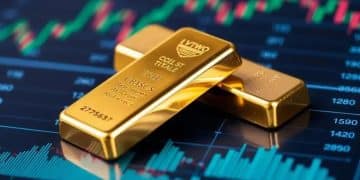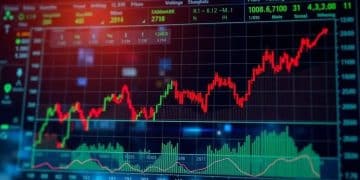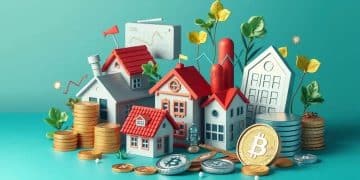Gold price trends vs silver: what you need to know
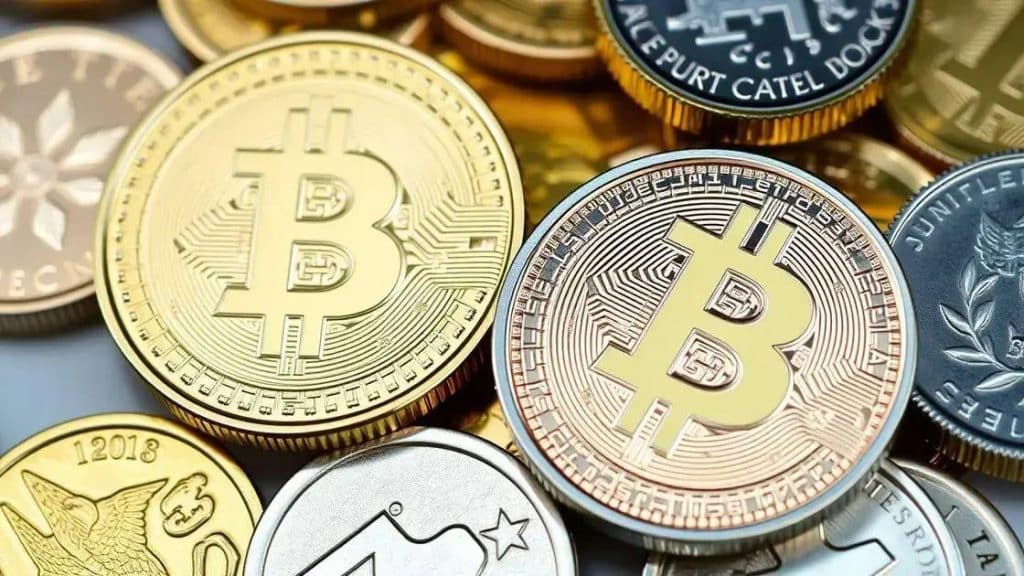
Anúncios
Investment strategies for gold and silver include allocating a portion of your portfolio, using dollar-cost averaging, and balancing between physical assets and ETFs based on market conditions to optimize returns.
Gold price trends vs silver are pivotal for investors navigating the precious metals market. Curious about how these trends affect investment decisions? Let’s dive into their key differences.
Anúncios
Understanding gold and silver price dynamics
Understanding the gold and silver price dynamics is essential for any investor in the precious metals market. Prices for these metals fluctuate due to various factors that impact their demand and supply.
Several key elements influence these price movements, which are crucial for making informed investment decisions. For instance, economic indicators such as inflation rates can significantly affect gold and silver prices. When inflation rises, many investors turn to precious metals as a hedge against currency devaluation, driving up prices.
Anúncios
Market Demand and Supply
Moreover, the balance between demand and supply plays a pivotal role in determining prices. A surge in demand or a decrease in supply can lead to higher prices. Additionally, seasonal demand, like increased purchases during festivals or economic crises, can also influence trends.
- Increased industrial demand for silver in electronics.
- Central banks buying gold as a reserve asset.
- Investor sentiment influenced by geopolitical tensions.
- Market speculation impacting short-term price volatility.
Another significant factor impacting prices is the US dollar strength. Since gold and silver are usually priced in dollars, a weaker dollar often leads to higher prices for these metals. This correlation is essential to understand for those looking to invest or trade in metals.
Global Economic Factors
Global economic conditions also heavily dictate price dynamics. Economic stability can drive down demand for safe-haven assets like gold, while uncertainties can prompt investments in these metals for security. Therefore, investors should remain alert to global news events that may affect market dynamics.
Lastly, technological advancements have made a significant impact on silver prices specifically. With rising uses in tech and renewable energy, silver’s demand continues to climb, making it an attractive asset for investors. Keeping an eye on these trends can help gauge future price movements.
Factors influencing gold prices
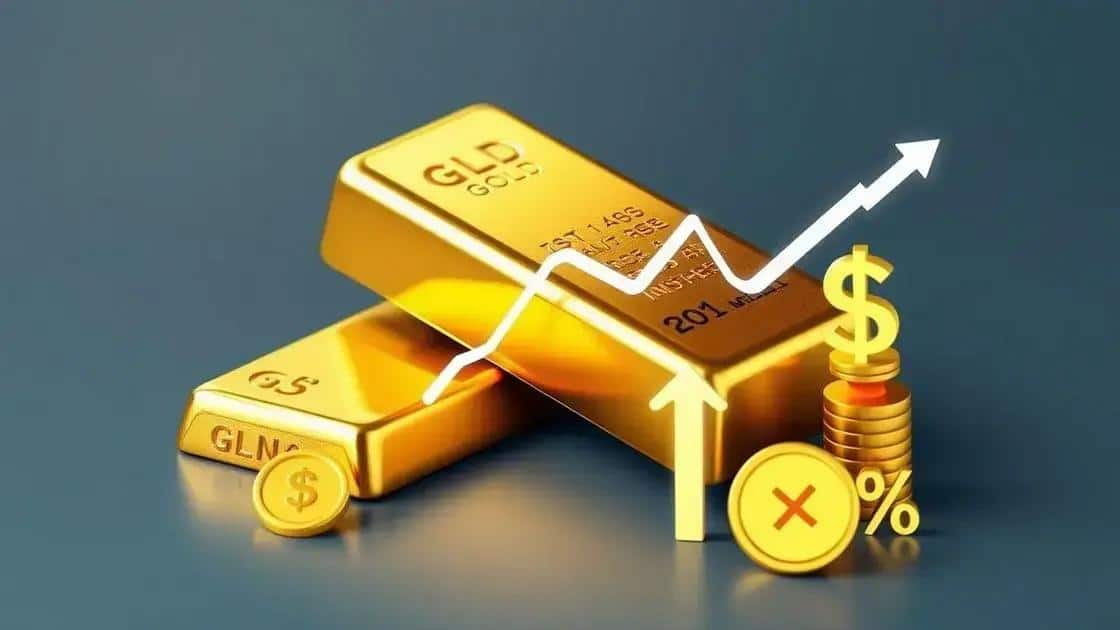
Many factors influencing gold prices can affect its value in the market. Understanding these factors is vital for anyone looking to invest in this precious metal.
One major component is the global economy. Economic instability or uncertainty often leads investors to flock to gold as a safe-haven asset. When stock markets decline or geopolitical tensions rise, demand for gold tends to spike, driving up its price.
Interest Rates and Inflation
Another important factor is the behavior of interest rates. When rates are low, gold becomes more attractive compared to currencies yielding higher interest, as it does not produce any income. Consequently, lower interest rates typically correlate with increased gold prices. Conversely, when rates rise, investors may seek better returns elsewhere, leading to lower demand for gold.
- Inflation impacts the purchasing power of currency.
- Weak currencies make gold a more appealing investment.
- Central bank policies influence market liquidity.
- Speculation on future prices can also drive demand.
Furthermore, changes in jewelry demand, especially from countries like India and China, can significantly impact prices. During festive seasons or wedding seasons, demand surges, which typically results in higher gold prices due to increased consumer interest.
Supply Factors
On the supply side, mining production levels also play a critical role. If mining yields decline or production is disrupted, the reduced supply can lead to higher prices. Additionally, geopolitical issues in key mining regions can disrupt production and lead to price fluctuations.
In summary, the interplay of economic factors, interest rates, jewelry demand, and mining outputs creates a complex environment that consistently influences gold prices. Staying informed about these variables can help investors make better decisions.
Factors influencing silver prices
Numerous factors influencing silver prices play a crucial role in determining its market value. Understanding these elements is essential for investors interested in silver.
One major factor is the level of industrial demand. Silver is widely used in various industries, including electronics, solar energy, and photography. When demand from these sectors increases, it often leads to higher silver prices due to consumption outpacing supply.
Investment Demand and Market Sentiment
Another significant influence comes from investment demand. Investors often turn to silver during times of economic uncertainty. When financial markets are volatile, many individuals prefer to hold silver as a tangible asset, which can drive up prices. Market sentiment plays a vital role in how investors perceive silver’s value.
- Increased demand from exchange-traded funds (ETFs) that invest in silver.
- Speculative trading based on price predictions.
- Consumer interest during periods of economic downturns.
- Influence of social media and news on market perceptions.
Supply factors are equally important. The mining output of silver can affect prices dramatically. If mining production decreases due to lower discovery rates or operational issues, supply tightens, which can elevate prices. Additionally, geopolitical events in major silver-producing countries can disrupt supply chains.
Currency Strength and Economic Indicators
The strength of the US dollar is another critical aspect. Silver is typically priced in dollars, so when the dollar weakens, silver becomes cheaper for foreign buyers, often increasing global demand. Economic indicators such as inflation also impact silver prices. If inflation rises, many investors seek to purchase silver as a hedge against the devaluation of their currency.
As silver’s industrial uses continue to grow, these factors will likely become even more intertwined, affecting its overall pricing dynamics. Staying informed on both economic and market-specific news is vital for anyone looking to invest in this metal.
Investment strategies for gold and silver
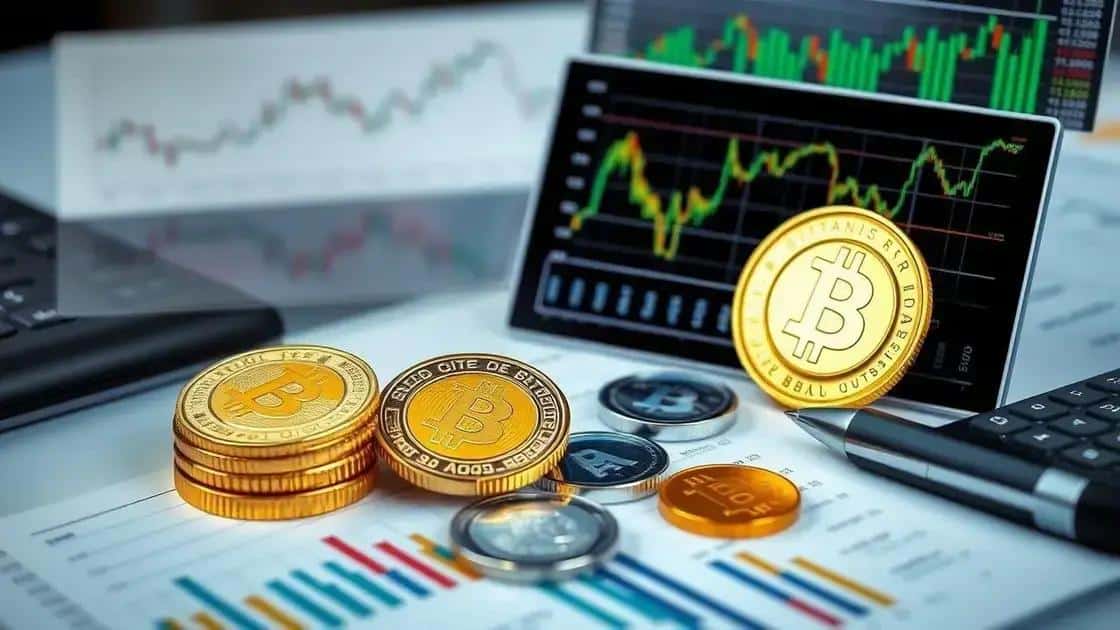
Exploring investment strategies for gold and silver is essential for anyone looking to diversify their portfolio. These precious metals can serve as a safe haven in times of economic uncertainty.
One effective strategy is to allocate a certain percentage of your portfolio to gold and silver. Many experts recommend between 5% to 10% depending on individual risk tolerance. This allocation allows you to benefit from the stability these metals provide without overexposing yourself to market volatility.
Physical Assets vs. ETFs
Another consideration involves deciding between physical assets and exchange-traded funds (ETFs). Investing in physical gold and silver, such as coins or bars, can offer a tangible asset that may hold value during economic downturns. On the other hand, ETFs can provide liquidity and ease of trading while still reflecting the performance of these metals. Choosing the right option depends on your investment goals.
- Physical ownership gives you direct control over your investment.
- ETFs offer easier buying and selling options.
- Consider storage and security for physical assets.
- ETFs may have lower transaction costs.
Dollar-cost averaging is another strategy that can be beneficial. This approach involves investing a fixed amount in gold and silver at regular intervals, regardless of price fluctuations. By doing so, you can average out the purchase price over time and reduce the impact of market volatility.
Market Research and Timing
Staying informed through market research is also critical. Understanding the factors driving prices, such as inflation rates and global economic conditions, will help you make informed decisions about when to buy or sell. Setting price alerts can also assist in capturing favorable market conditions.
Lastly, consider taking advantage of market dips. When prices drop, it may be an opportune time to increase your holdings in gold and silver. Markets can be unpredictable, but having a plan can help you navigate the ups and downs effectively.
FAQ – Frequently Asked Questions about Gold and Silver Investments
What is the best way to invest in gold and silver?
The best way to invest in gold and silver is by allocating a percentage of your portfolio to these metals, either through physical assets or exchange-traded funds (ETFs).
Why should I consider dollar-cost averaging?
Dollar-cost averaging helps mitigate the risk of price fluctuations by allowing you to invest a fixed amount regularly over time.
How does the strength of the US dollar affect gold and silver prices?
When the US dollar weakens, gold and silver often become cheaper for foreign investors, which can drive up demand and, consequently, prices.
What role does industrial demand play in silver prices?
Industrial demand significantly influences silver prices since it is used in various sectors like electronics and renewable energy; increased demand can lead to higher prices.

